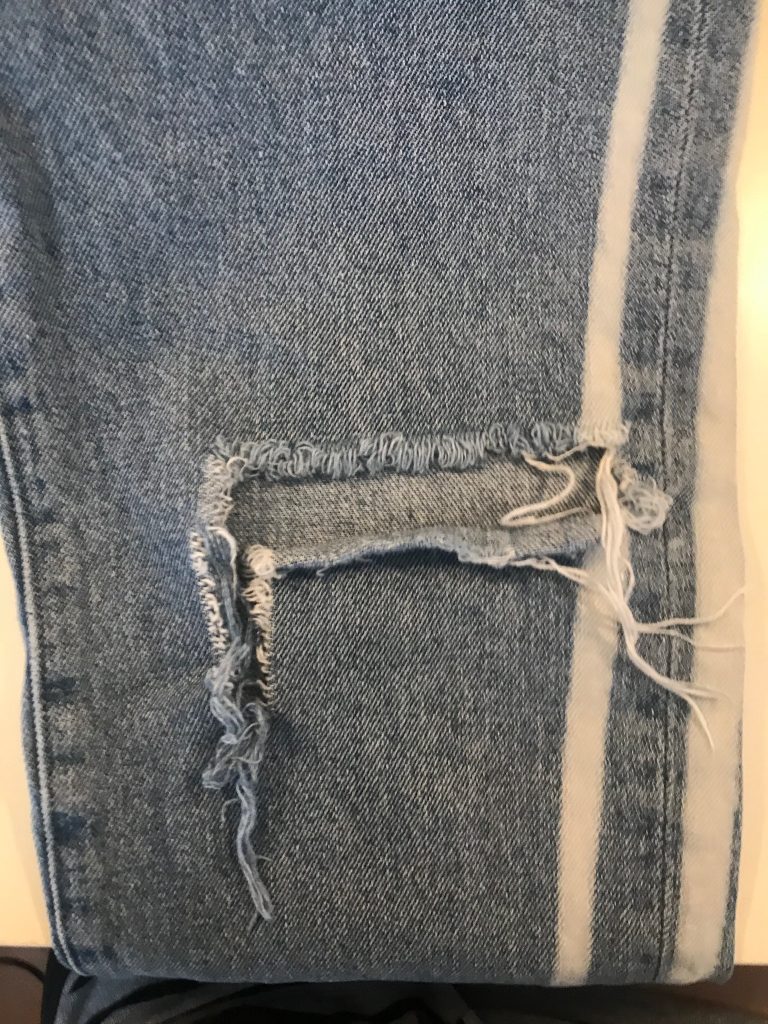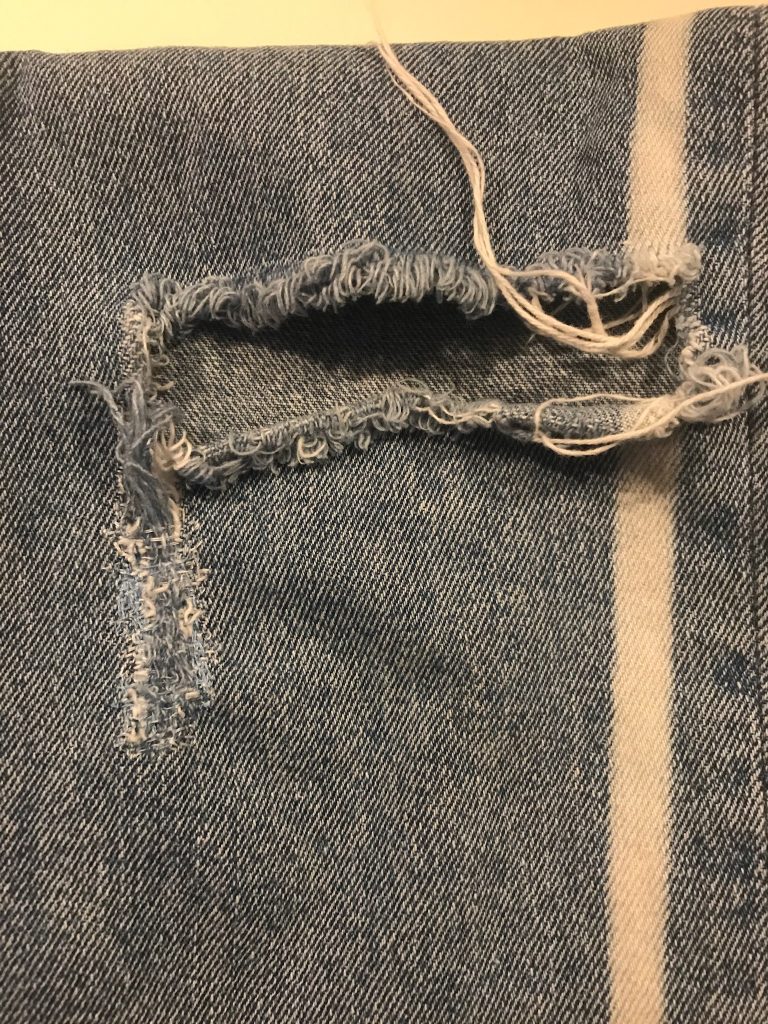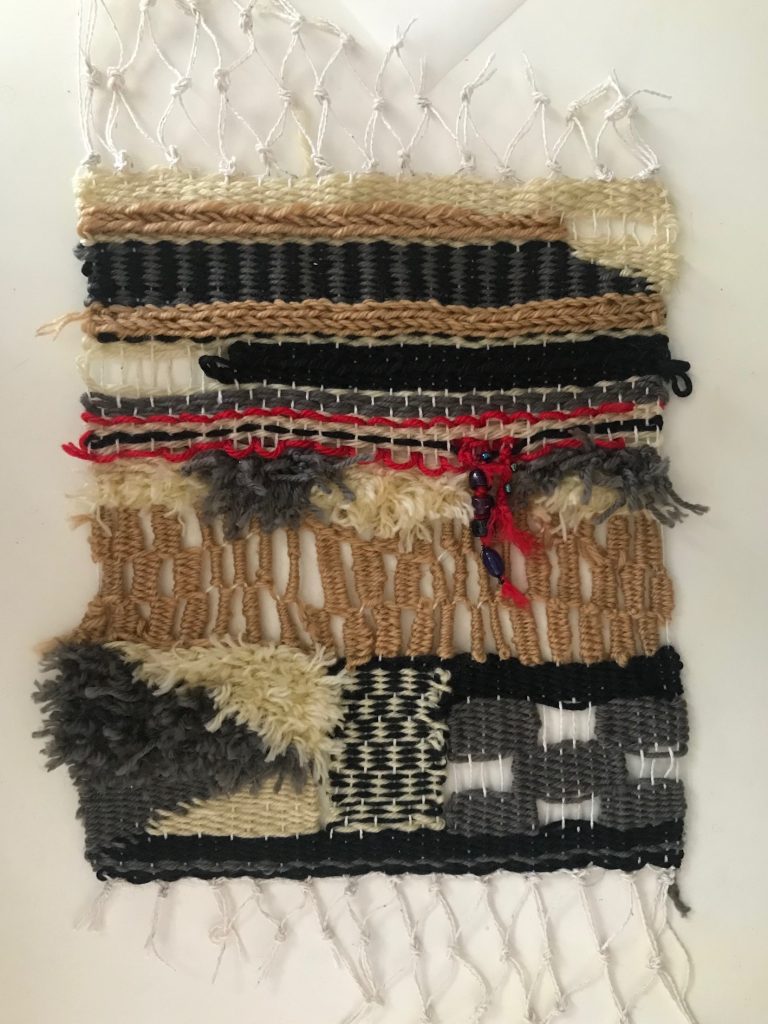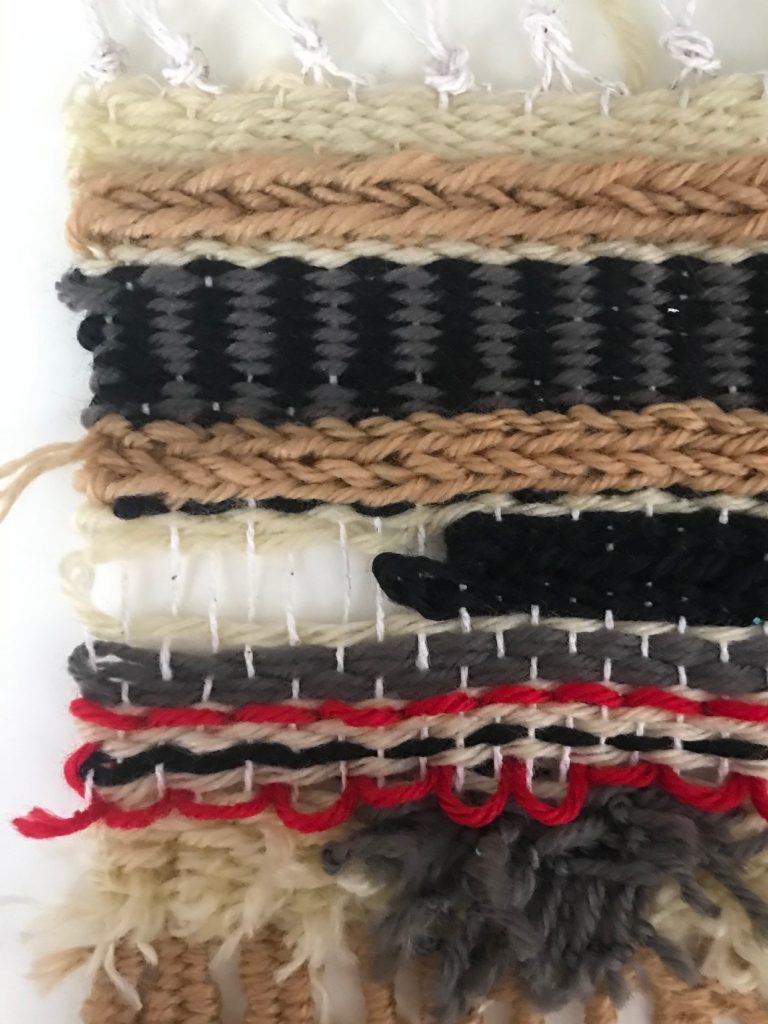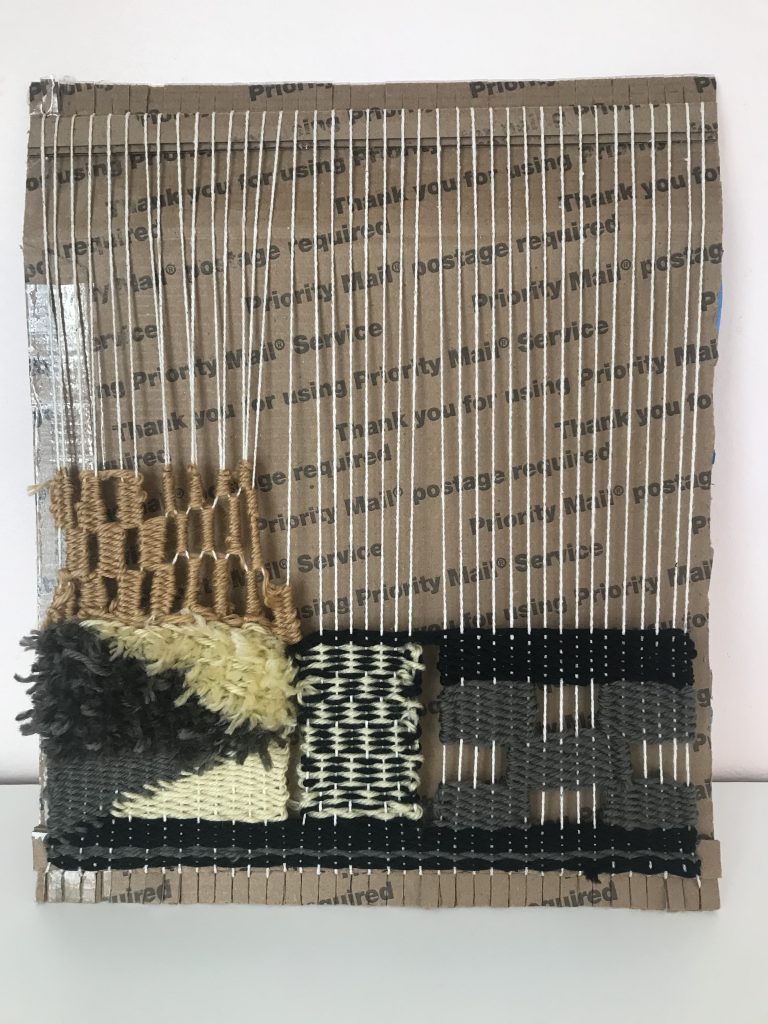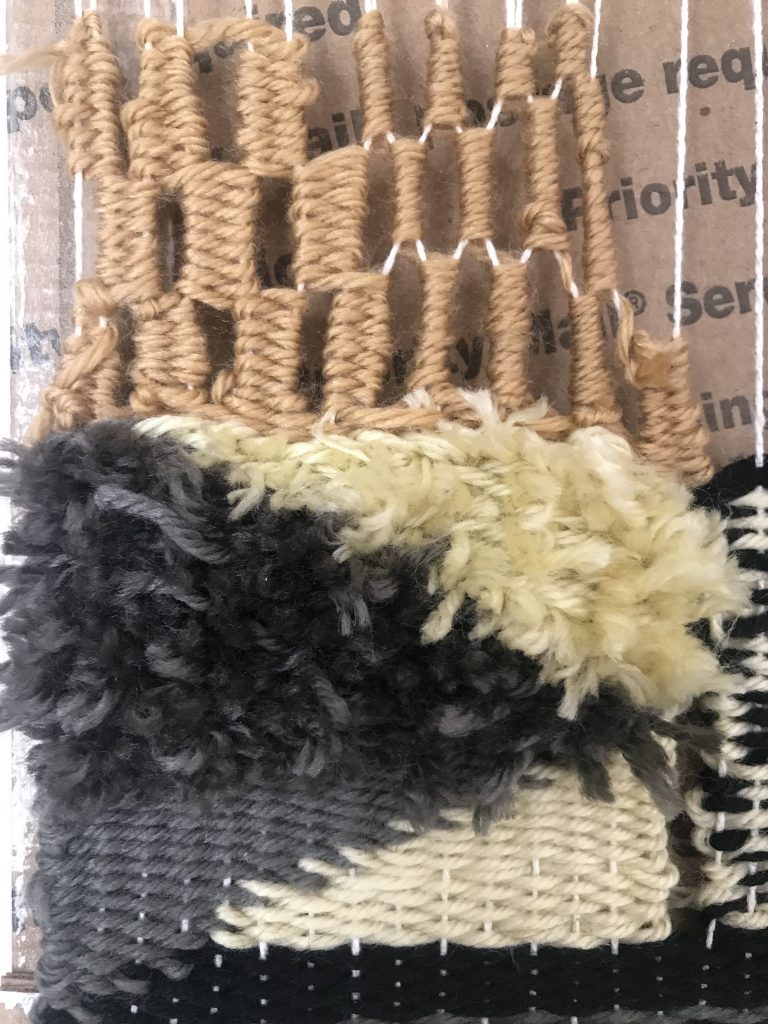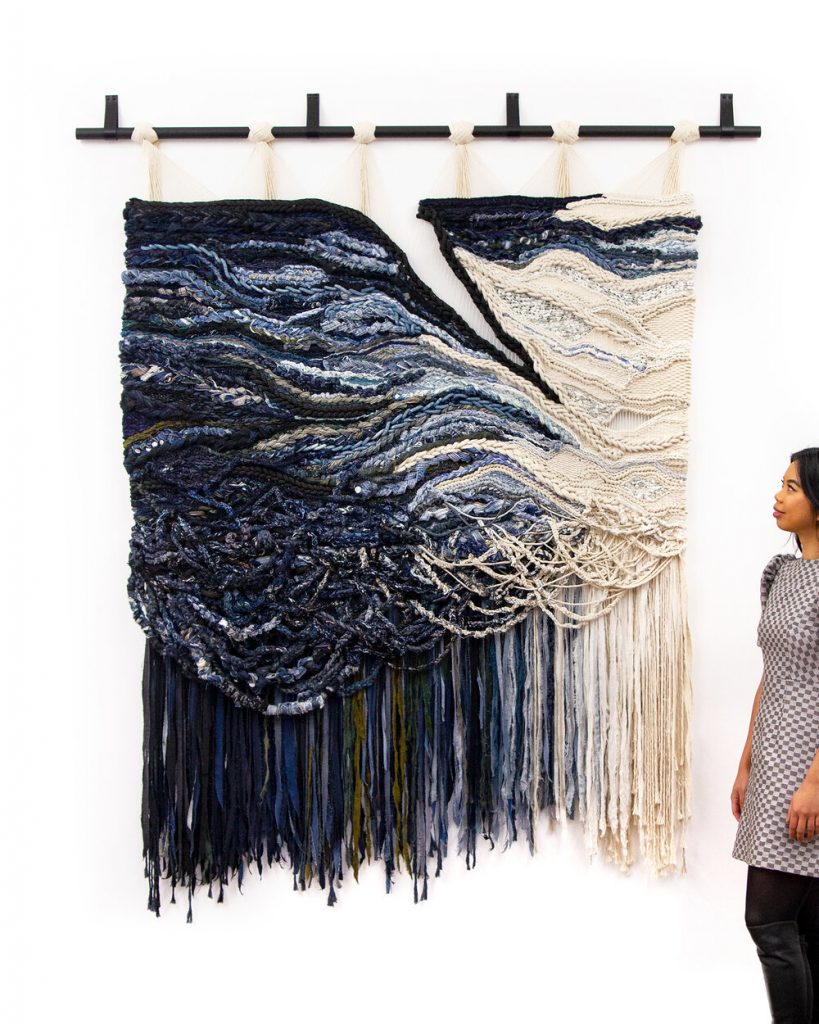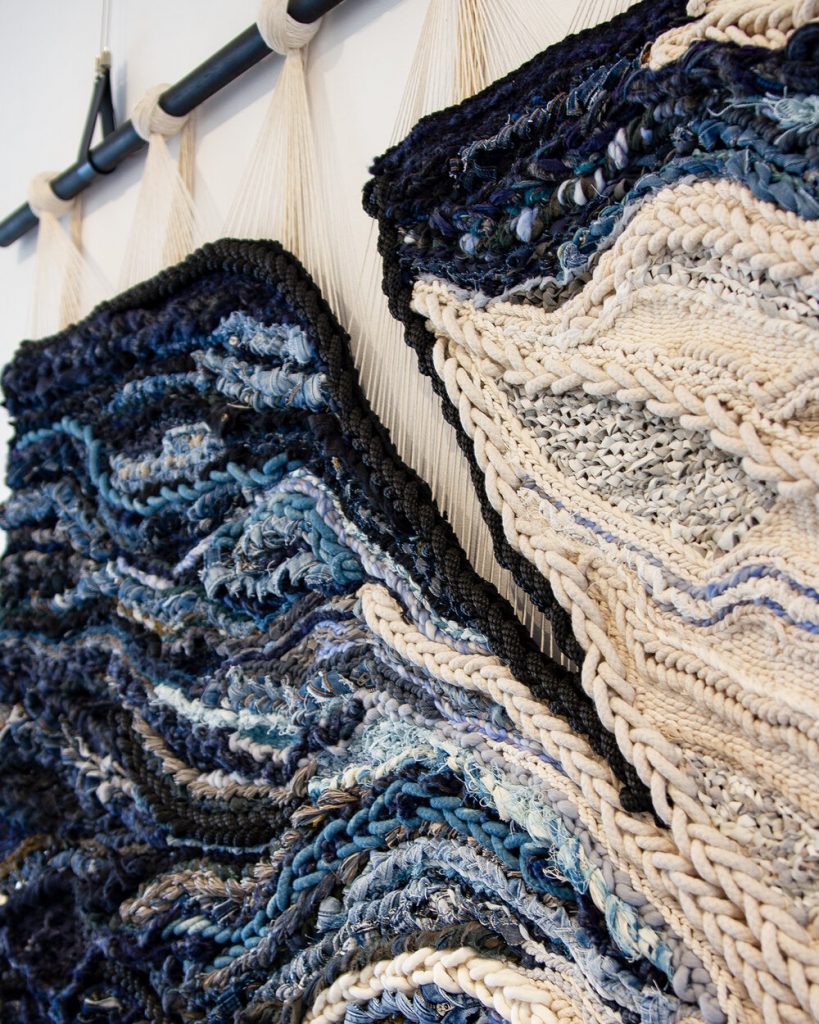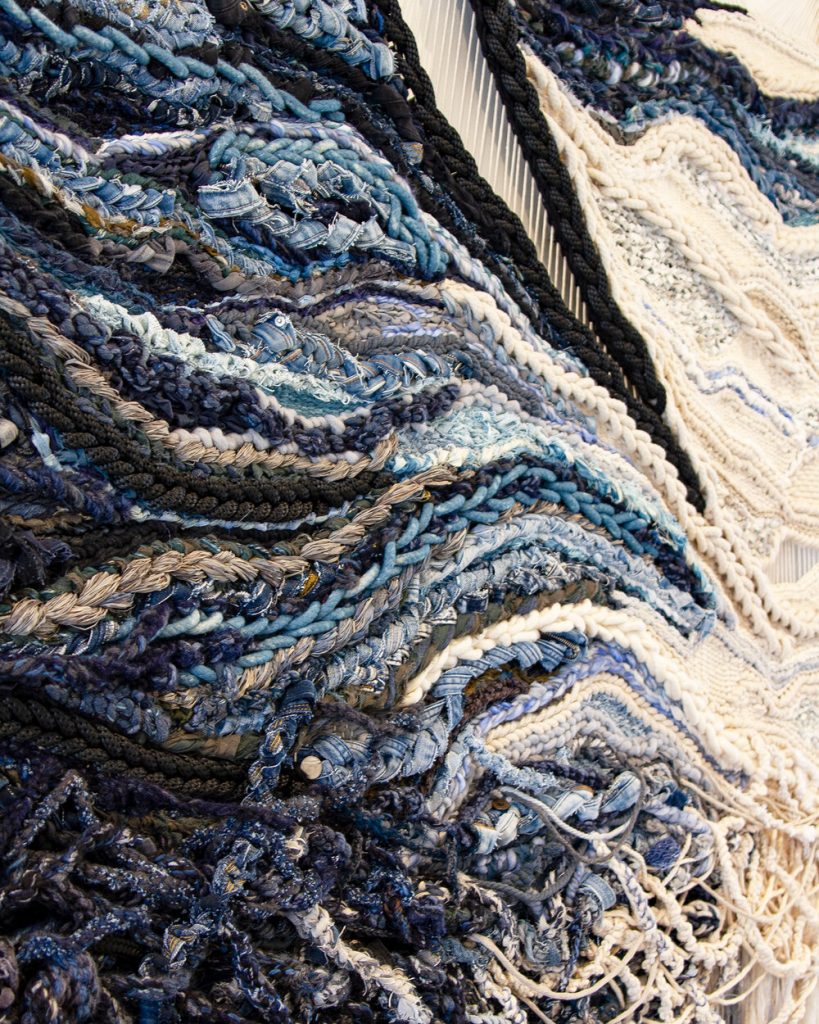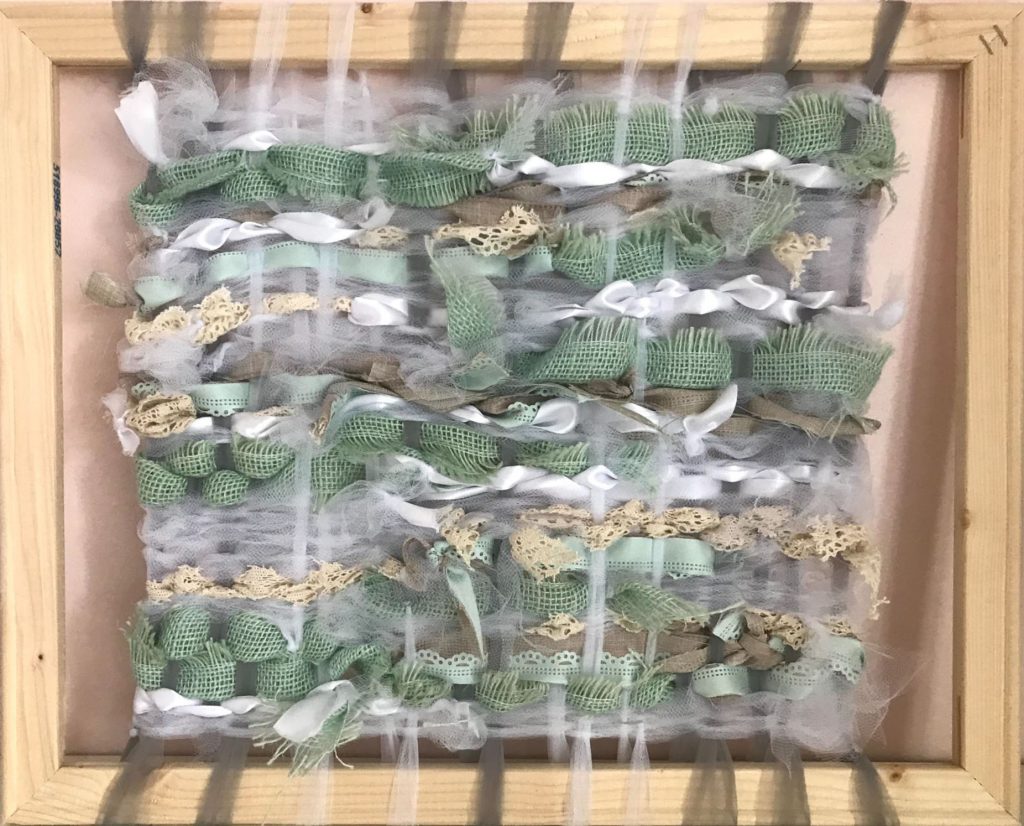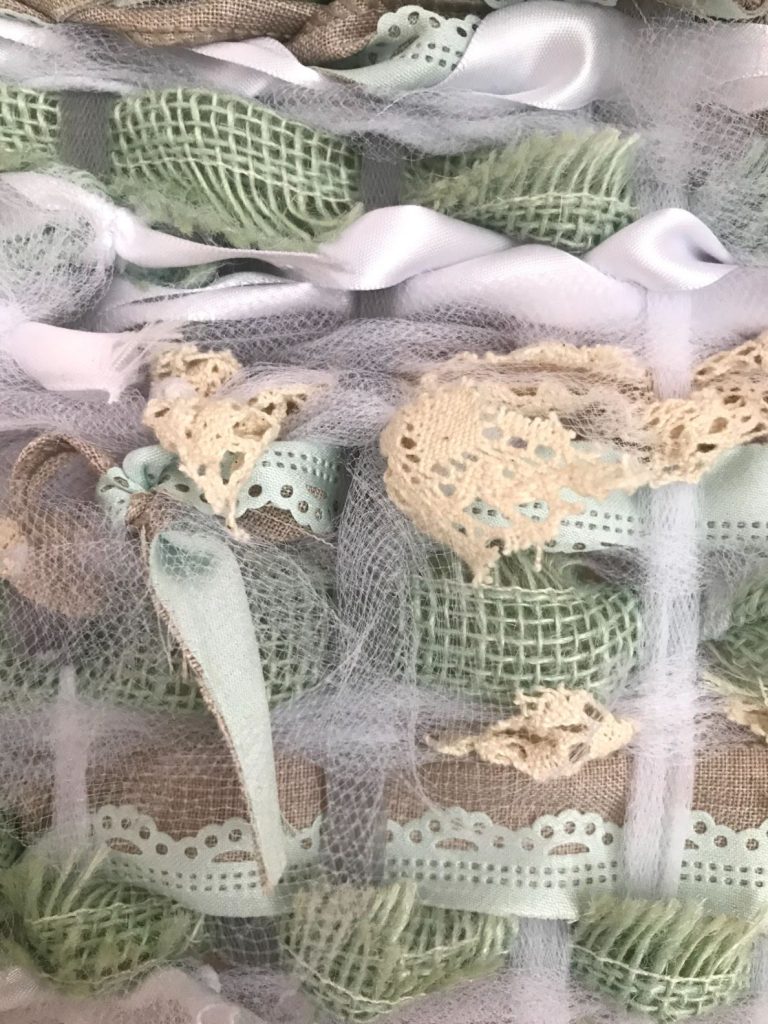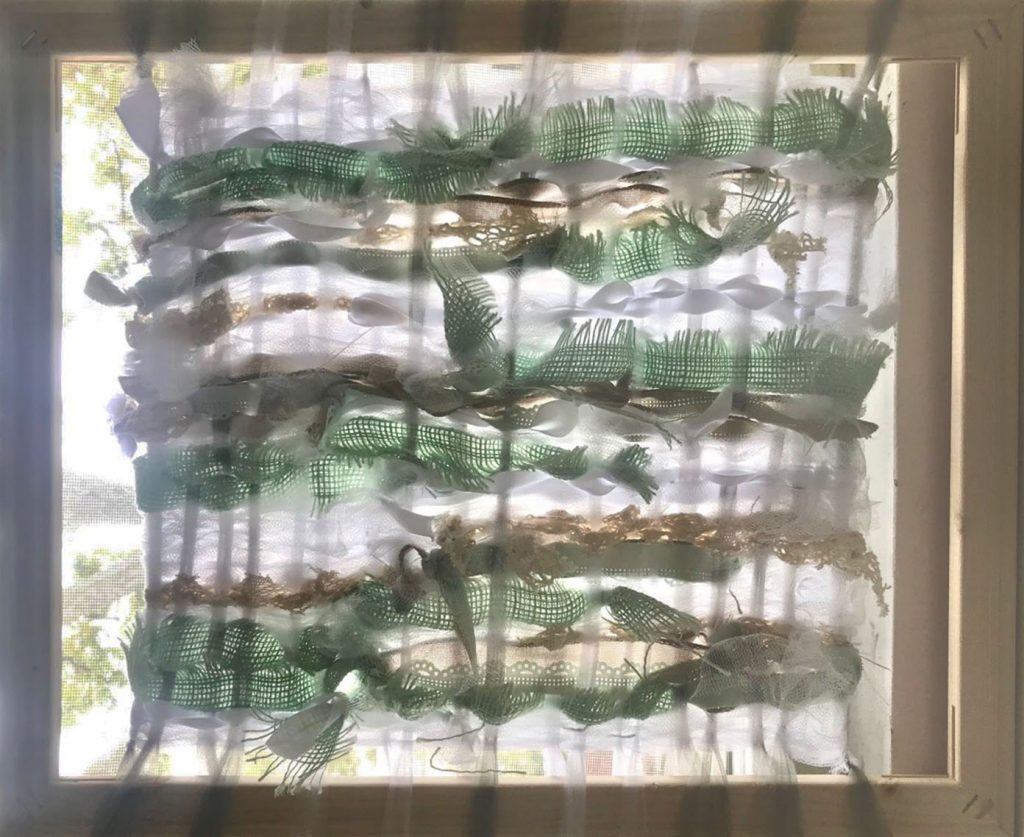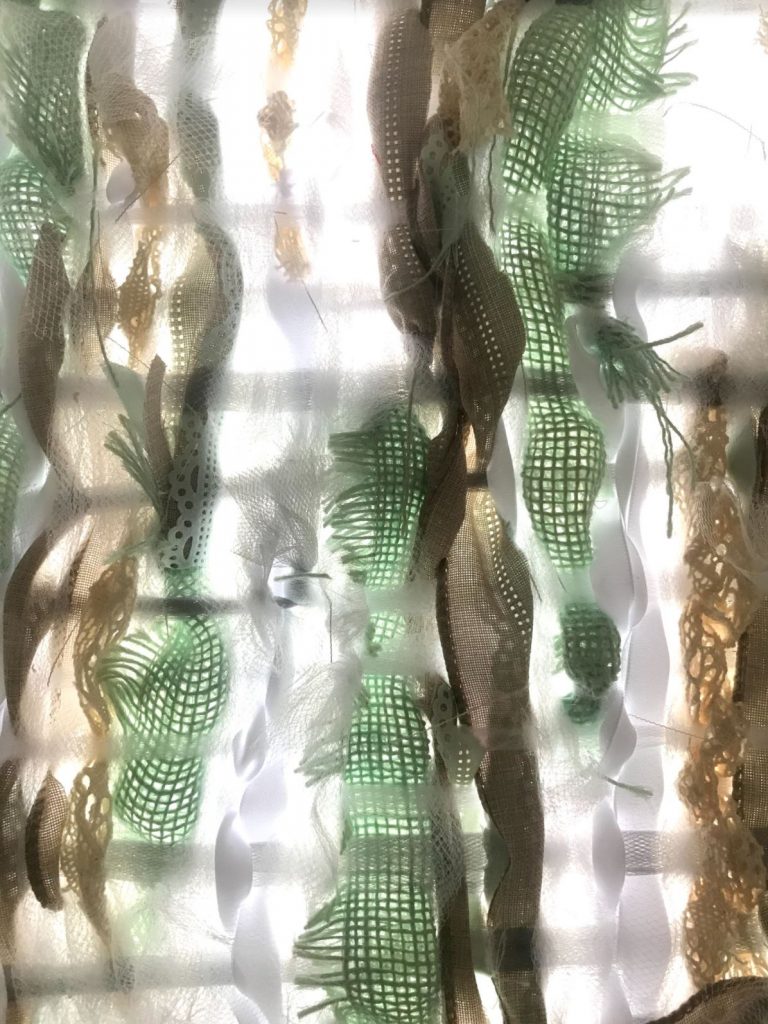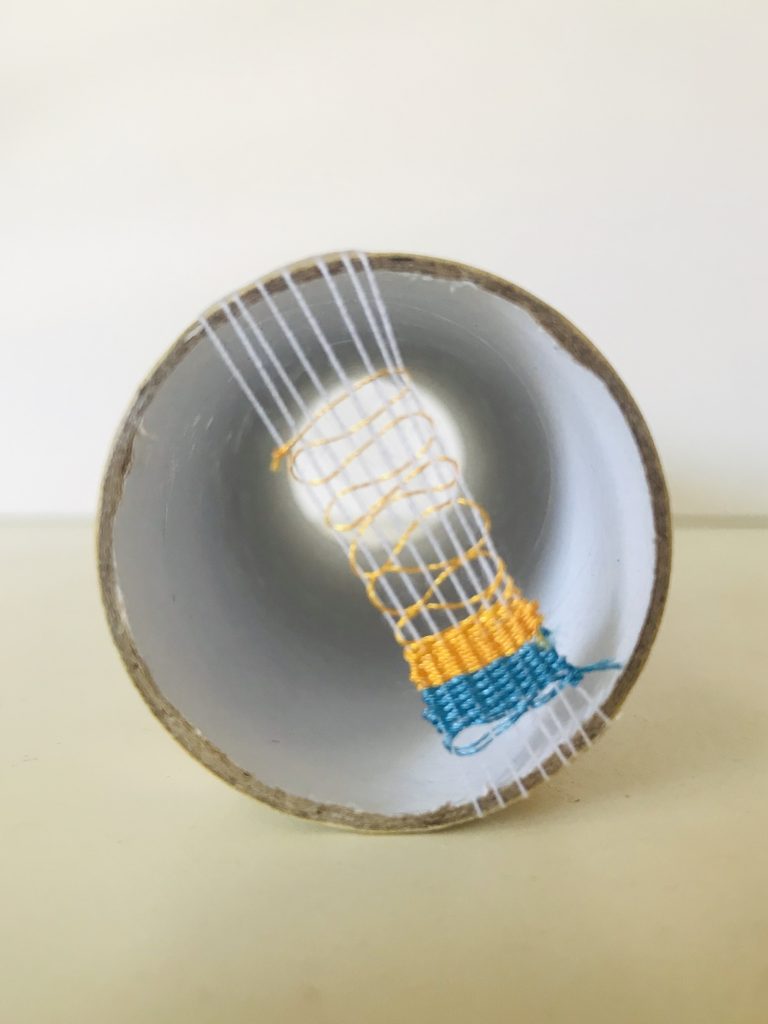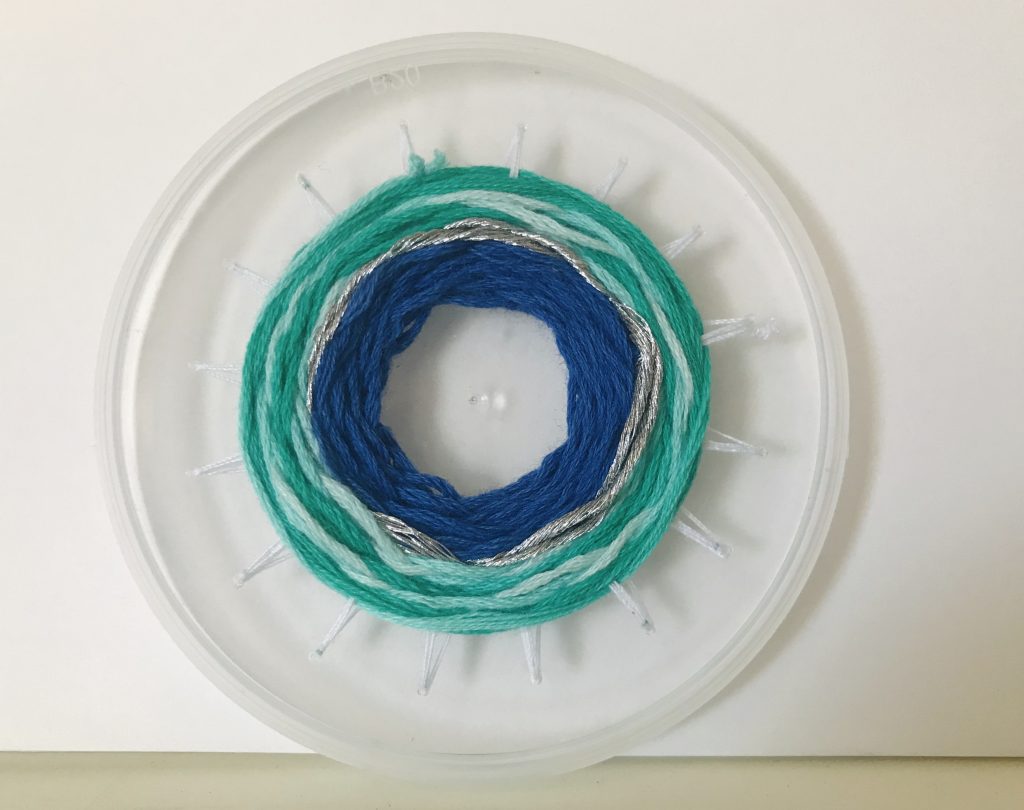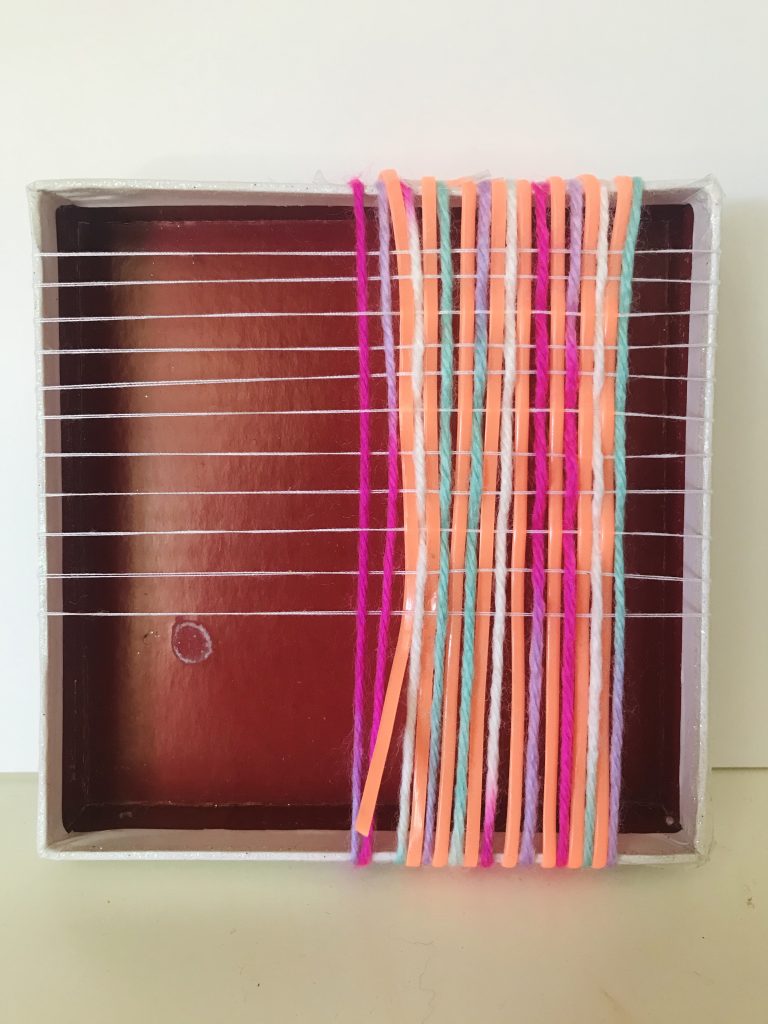For this part of the assignment, I continued my mending from last time.
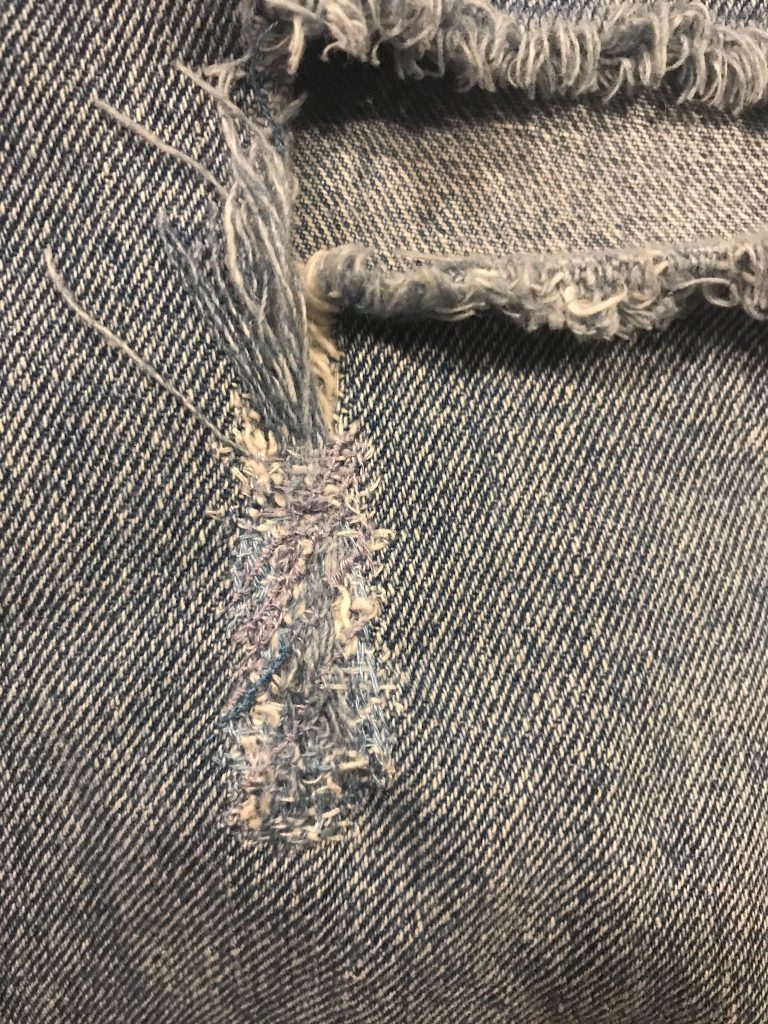
I continued to use the same techniques, fixing the rips in the fabric by creating more wefts, and then layering diagonal stitches on top to help it blend back into the denim. I experimented with using a thicker needle and blending the strands of thread together. Previously, I used one thread color at a time. This time, I twisted 2 strands of blue thread, and 1 strand of white thread together, creating a thread that is slightly thinner than embroidery floss. While the colors did seem to help the alterations blend into the original pants. it was a bit harder to match the weave of the fabric, due to the thickness of the tread.
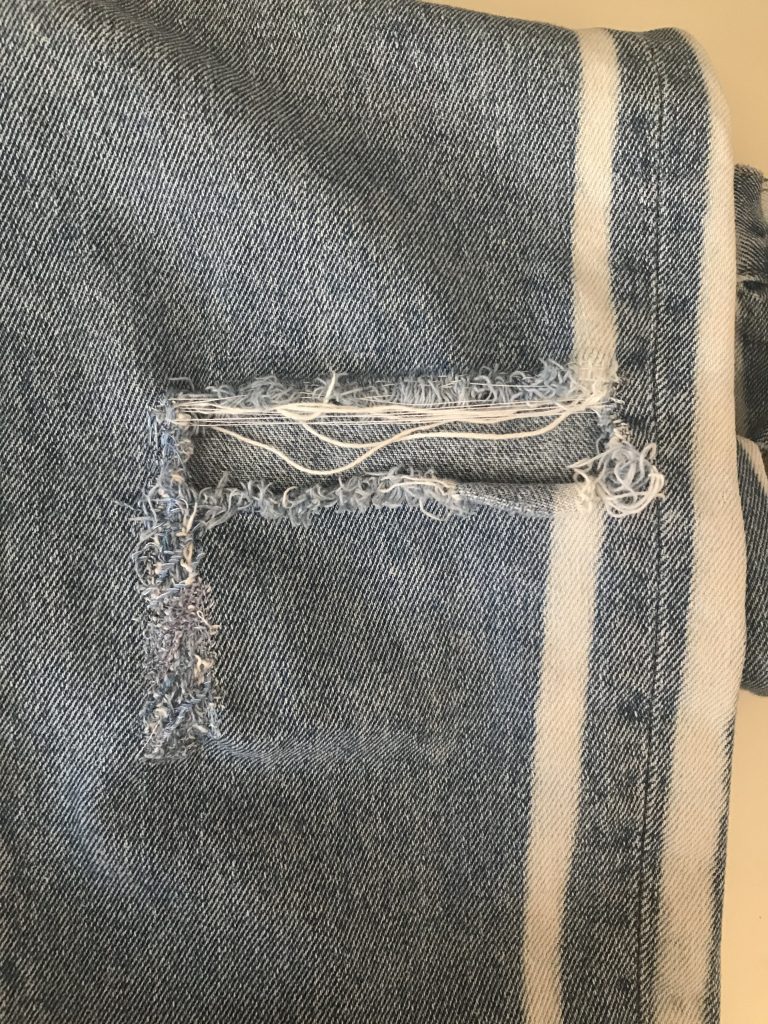
I also finished up by stitching around the perimeter of the rip. This allowed me to reinforce the sides, and prevent more of the weave from coming loose. I added more white weft threads in order to be able to hold up the original loose weft threads (coming from the right side). I also finished weaving in the original loose threads, so the loose-ends now look completely alike. Going up the left side of the rip with the new blended thread allowed me to make the mending look a little more cohesive.
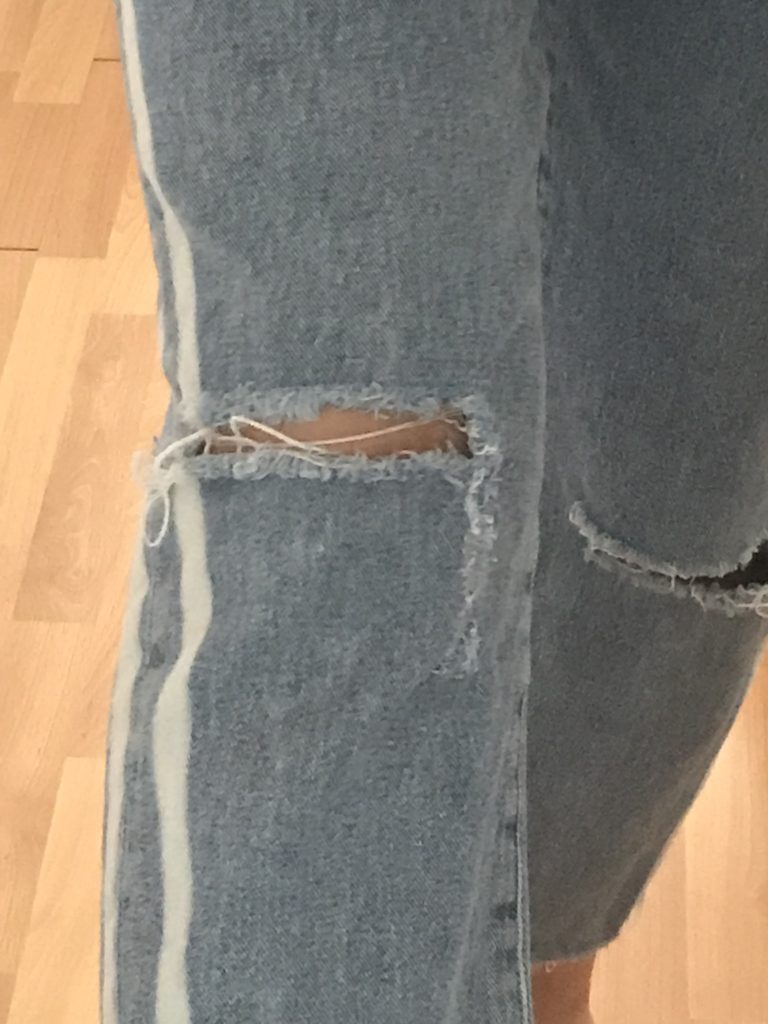
The mended area blends in pretty well from far away, and when worn. Up close, it is possible to see all the little threads and patterns that don’t match quite right, but I am pretty happy with the result. I do think that the strategy of using one thread at a time was slightly more successful than blending the colors, but it was very time-consuming. There is a bit of a trade-off between the two stratgies, but I think using them together, I was able to create a nice result.

